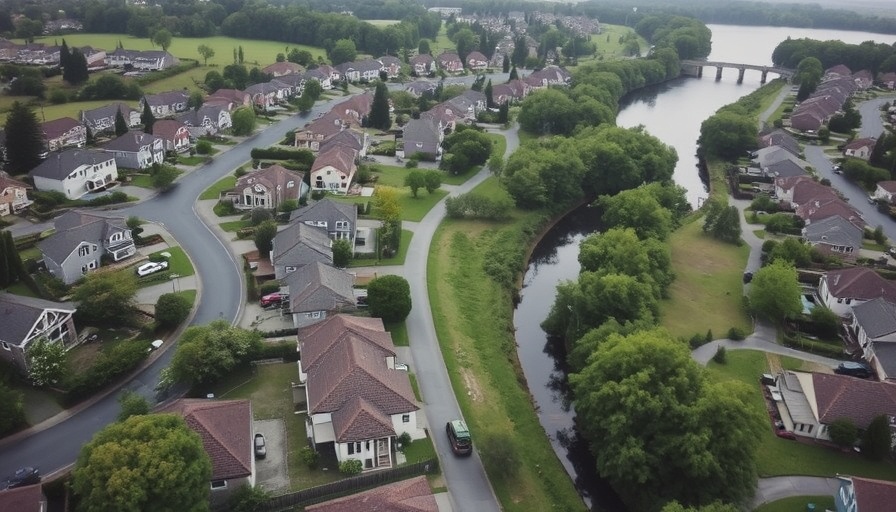
Resurrecting the Moa: A Bold Vision or a Feasible Reality?
In a groundbreaking announcement that stirs both excitement and skepticism, Peter Jackson, the famed director behind 'The Lord of the Rings,' has pledged his backing for a monumental venture undertaken by Colossal Biosciences. This biotech company aims to resurrect New Zealand’s extinct giant moa, a flightless bird that once towered at up to 12 feet. With Jackson’s financial investment of $15 million, he partners with the company to engineer living birds that may closely mirror these fascinating creatures of yore.
Why the Moa?
Jackson's fascination with the moa isn't just about nostalgia; it's representative of a broader cultural significance in New Zealand. “Every New Zealand schoolchild has a fascination with the moa,” he shares, implying that the bird is a national symbol of the rich natural history that once thrived on the islands. The moa's extinction about 600 years ago, primarily due to overhunting by Māori settlers, is a poignant reminder of ecological loss and is part of the larger narrative of species conservation.
Scientific Feasibility: Can We Bring Back the Moa?
Outside the realms of cinema and storytelling, experts express a mix of caution and hope regarding the project. Some scientists assert that the idea of de-extinction – reintroducing species that have long vanished from the Earth – is rife with challenges that may be insurmountable. The possibility of utilizing DNA from well-preserved moa bones is key, yet some researchers question if genetic alterations of existing species would truly resurrect what the moa was, both genetically and ecologically.
Colossal’s chief scientist, Beth Shapiro, highlights that while extracting and comparing DNA from ancient bones sounds promising, it’s merely the start of a lengthy journey filled with scientific, ethical, and environmental hurdles. “It’s a long shot, but breakthroughs are rooted in tackling ambitious challenges,” she notes, emphasizing that research should not distract from the urgent efforts needed to protect endangered species currently at risk.
Bridging Past Enthusiasm with Future Realities
The moa project does not exist in a vacuum; it sits at the crossroads of exciting technological advancements and deep-rooted ecological responsibilities. As discussions around cloning and genetic engineering rapidly evolve, there are increasing calls to prioritize current conservation efforts over potentially recreating past creatures. This dichotomy evokes a vital question: while the fascination surrounding extinct species is palpable, should our efforts shift toward saving the biodiversity that exists today?
Community Implications: What Can We Learn?
The implications of Jackson’s moa revival project extend beyond the scientific community, resonating with local and global audiences painfully aware of the environmental challenges we face. For Central Florida residents, understanding these initiatives can offer crucial lessons on the importance of preserving our unique ecosystems, reinforcing local awareness of conservation practices.
Moreover, as parents and families instill values of environmental stewardship in the next generation, Jackson’s collaboration with Colossal could inspire children not merely to explore the natural world but to actively participate in its preservation. The story serves as a reminder that every species, extinct or existing, plays a vital role in our shared ecological landscape.
A Cautionary Tale in Science
The ambitious endeavor highlights a growing trend where technology and ethics intertwine. Critics argue that focusing on resurrecting the moa poses a potential distraction from addressing the pressing issues of habitat loss and climate change that threaten species today. In an age where modern convenience often overlooks nature's intrinsic value, this project could serve as a stark reminder of what’s at stake.
Final Thoughts: The Future of De-Extinction
The future of genetic engineering and de-extinction poses pivotal questions for humanity: How far are we willing to go to mend our past ecological mistakes? Should we allocate resources towards resurrecting what has been lost, or focus these efforts on protecting the dwindling species that remain? Peter Jackson’s backing of the moa project could very well open doors for further discussions on biodiversity, conservation ethics, and the role of technology in our natural world.
Learn more about this initiative and participate in the conversation about our ecological future! Add Row
Add Row  Add
Add 






Write A Comment